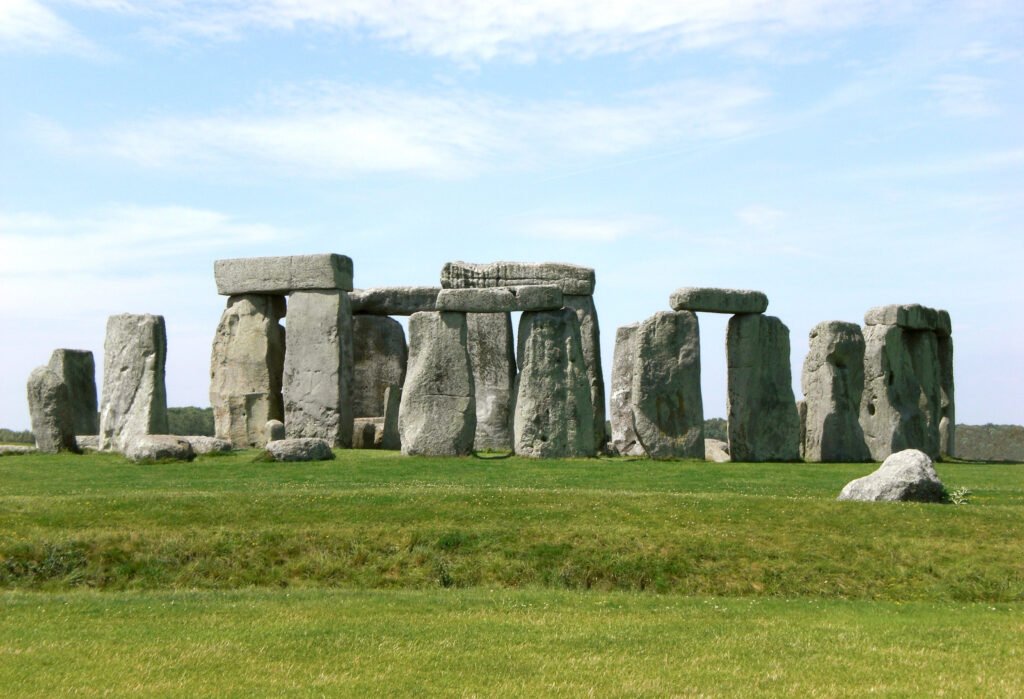You probably think we’ve figured out everything about our ancestors by now. With all our advanced technology and brilliant minds working around the clock, surely we’ve cracked every code and solved every puzzle from the past, right? Think again. Despite decades of research and countless hours of investigation, some of the most fascinating mysteries from ancient times remain completely unsolved.
From towering monuments that shouldn’t have been possible to build, to strange artifacts that don’t fit any known pattern, our planet is littered with enigmas that continue to baffle the world’s leading experts. These aren’t just minor gaps in our knowledge. These are mind-bending puzzles that challenge everything we think we know about human history and capability.
The Great Pyramid of Giza: Engineering Wonder or Impossible Achievement?

Constructed between 2589 and 2566 B.C., the Egyptian pyramids would be a wonder of engineering and physics even if they had been built today. This isn’t just ancient construction we’re talking about. This is precision engineering that makes modern architects scratch their heads in disbelief.
The massive limestone blocks, some weighing over 15 tons, were transported from quarries hundreds of miles away and positioned with such accuracy that you can’t slide a knife blade between them. So how did those ancient people living in the ancient desert manage it? There are legitimate scientists who believe aliens from another planet must have been involved. Other scientists believe the answer lies in ramps, wet sand, and pulleys.
Stonehenge: Ancient Calendar or Sacred Temple?

One of England’s more famous landmarks, the prehistoric wonder that is Stonehenge, remains as mysterious as the first day it was ever recorded by Roman chroniclers. Historians generally agree that early Britons constructed Stonehenge sometime 5,000 years ago. The massive trilithons tower against the English sky like sentinels from another world.
What makes this monument truly puzzling isn’t just its age, but the sheer ambition behind it. It has never been clear as to why the structure was ever made. Was it an astronomical observatory? A healing temple? A burial ground for ancient kings? Every theory seems plausible until you dig deeper and realize none fully explain the monument’s complex design and purpose.
Göbekli Tepe: The Temple That Rewrote History

More than 11,000 years ago, hunter-gatherers built a monumental stone complex that is thought to be the world’s first temple. Known as Göbekli Tepe, the megalithic settlement is perched on a mountain ridge in Upper Mesopotamia, what is now southeastern Turkey. The Neolithic site, which translates to “belly hill” in Turkish, is two times older than Stonehenge and contains a series of elaborate circular enclosures constructed of massive T-shaped limestone columns.
Researchers consider the columns, which stand up to 18 feet (5.5 meters) tall and weigh as much as 50 tons (45 metric tons) each, to be architectural marvels. The structures were completed with only the tools available at the time, such as stone hammers and flint blades – which researchers have found strewn about the site during subsequent excavations. Perhaps most mysteriously, The temple was mysteriously abandoned around 8,000 BC and filled in with dirt containing scattered human bones.
The Nazca Lines: Messages for the Gods or Ancient Runway?

Between 500 BC and 700 AD, the Nazca people of Peru carved 12 to 15 inches out of rust-colored rock, revealing the lighter-colored stone in deeper layers. The result was massive in-ground pictures of animals, plants, humans and geometric shapes that are best seen from an airplane. These aren’t small drawings. We’re talking about images so massive they stretch for miles across the desert floor.
Some outlandish theories suggest the carvings point to aliens or ancient astronauts, but researchers can’t agree on some of the more realistic theories, either. Initial scholars suggested the Nazca Lines were connected to astronomy, while recent theories argue they were used for begging rain from the gods. The precision and scale of these geoglyphs continues to astound visitors and researchers alike.
The Voynich Manuscript: The Medieval Text No One Can Read

In 1912, rare book dealer Wilfrid Voynich acquired a medieval manuscript that he claimed had been housed in “an ancient castle in southern Europe.” Over the years, several people have professed to decipher it, but each time have been greeted with a massive chorus of doubts. Some suspect the whole thing is an elaborate hoax. Now housed at Yale University, the Voynich manuscript is available to the public for anyone interested in trying to solve the puzzle once and for all.
Created by unknown hands in the 15th century, this ancient historical mystery, the Voynich Manuscript, features drawings of non-existent plants, mysterious astronomical charts, and text written in a script that has defied top cryptographers, code breakers, and even advanced AI systems. The strange botanical illustrations show plants that don’t exist anywhere on Earth, adding another layer to this bewildering puzzle.
Costa Rica’s Stone Spheres: Perfect Monuments with Unknown Purpose

While clearing the jungle for banana plantations in 1940 in Costa Rica’s Diquis Delta region, employees of the United Fruit Company uncovered numerous large stone spheres partly buried in the forest floor. Around 300 spheres are known to exist, with the largest weighing 16 tonnes and measuring eight feet in diameter, and the smallest being no bigger than a basketball. Almost all of them are made of granodiorite, a hard, igneous stone.
Part of the mystery surrounds the way in which they were created as the near-perfect spheres appear to have come from a quarry that was more than 50 miles away and they were created in a time in which metal tools had apparently not been invented yet. However, the biggest mystery remains what they were used for. The people who made them didn’t leave any written record and there no myths or legends or other stories that are told by the indigenous people of Costa Rica about why the spheres were made.
The Antikythera Mechanism: Ancient Greek Computer

Discovered in a Roman shipwreck off the Greek island of Antikythera, this corroded bronze device looked like nothing more than ancient junk when divers first pulled it from the sea in 1901. It wasn’t until decades later that researchers realized they were looking at something extraordinary. This wasn’t just any ancient artifact. It was essentially an ancient computer.
Unlike the Roman dodecahedra, scientists have a pretty good idea what the so-called Antikythera Mechanism is all about. But to this day, no one actually knows what was exactly inside the artifact. Some say it could have been a simple pendulum-based system, but the exact “science” remains a mystery. The sophistication of this device suggests the ancient Greeks possessed technological knowledge that we’re only now beginning to fully appreciate.
The Roman Dodecahedra: Mysterious 12-Sided Objects

These mysterious objects got their name from their 12 sides, but the shape is about all that experts can agree on. They were made between AD 100 and 300 of bronze or stone with a hollow center, and the Roman use for the Dodecahedrons is hotly debated. Some believe the 12 sides had to do with zodiac signs, while other theories suggest the objects were weapons, toys or religious symbols.
Found scattered across former Roman territories, these perfectly crafted geometric objects have stumped archaeologists for generations. Their uniform design suggests they served a specific purpose, yet no Roman text mentions them. No two theories about their function seem to match, making them one of archaeology’s most persistent puzzles.
The Plain of Jars: Laos’ Scattered Stone Mystery

Scattered across the hills of Laos, thousands of massive stone jars dot the landscape, their purpose still unknown. Some believe they were used in ancient burial practices, while others think they stored food or water for travelers. What makes them truly mysterious is the fact that no one knows who created them or how they transported these multi-ton structures. Adding to the mystery, many of the jars are found in locations heavily bombed during the Vietnam War, further complicating their study.
These aren’t small containers we’re talking about. Many of these stone jars are massive, weighing several tons and carved from solid rock. The effort required to create and position them across such a vast landscape suggests a major undertaking by an unknown civilization.
The Phaistos Disc: Ancient World’s First Printing Press

Among ancient historical mysteries involving undeciphered scripts, the Phaistos Disc stands unique. This 15cm clay disc from Minoan Crete bears 241 tokens made with 45 distinct stamps – essentially the world’s first movable type printing. Yet despite over a century of study, no one has definitively cracked its code. The sophisticated printing method suggests this wasn’t a one-off creation, but no other examples have ever been found. Today, it remains one of the most mysterious ancient artifacts ever discovered.
What makes this disc particularly intriguing is that it represents technology that wouldn’t be reinvented until Gutenberg’s printing press over 3,000 years later. The spiral arrangement of symbols and the precision of the stamping technique indicate a level of organization and planning that seems almost modern.
The Lost City of Thonis-Heracleion: Egypt’s Sunken Port

About 2,700 years ago, the Egyptian port city Thonis-Heracleion served as the gateway to the Mediterranean, but the urban center was lost in time for thousands of years. It wasn’t until 2000 that French underwater archaeologist Franck Goddio and his team discovered ancient artifacts. Eventually, they discovered that an entire city was buried underwater off the Egyptian coast, complete with bridges, 16-foot statues, animal sarcophagi and other ancient marvels.
Historians are unsure what caused Thonis-Heracleion to slide into the sea. One theory is that a sudden combination of earthquakes, tsunamis, and floods around 800 CE brought the city down. The remarkably preserved state of this underwater city continues to yield discoveries that reshape our understanding of ancient Egyptian maritime culture.
The Amazon Spheres: Mysterious Ceramic Burial Urns

A mysterious set of ancient ceramic spheres has been unearthed deep in the Amazon, revealing unusual contents that could upend what we thought we knew about pre-Columbian rainforest cultures. In the floodplain region of Fonte Boa, deep within Brazil’s Amazonas state, members of the local community stumbled upon seven large ceramic urns, unearthed by the uprooting of a tree near Lago do Cochila. What makes the discovery especially compelling is what was inside: human bones, turtle shells, and fish remains.
These ceramic spheres are believed to have served a funerary function, but their unusual contents hint at rituals involving both death and food, a connection rarely seen in Amazonian archaeology. “They were likely sealed with organic material, long since decomposed, and buried just 40 centimeters deep – possibly beneath ancient homes,” said Dr. Geórgea Layla Holanda, one of the lead archaeologists, in a press briefing shared by the Institute. The urns were uncovered on an artificial island, part of a wider network of earth mounds believed to have been engineered centuries or even millennia ago. These structures, built by ancient Indigenous communities, raised habitable land above the floodwaters that routinely sweep the Solimões River Basin.
Conclusion

These twelve ancient mysteries represent just the tip of the iceberg when it comes to unexplained phenomena from our past. Each one challenges our assumptions about ancient capabilities and forces us to reconsider what we think we know about human history. From impossible engineering feats to undeciphered scripts, these puzzles continue to captivate researchers and amateur sleuths alike.
What’s particularly fascinating is how these mysteries span different continents, time periods, and civilizations, yet they all share one common thread: they demonstrate that our ancestors were far more sophisticated and capable than we often give them credit for. Whether we’re looking at precision-carved stone spheres in Costa Rica or massive temples in Turkey, the evidence suggests that ancient humans possessed knowledge and skills that we’re still trying to understand.
While some of these mysteries may eventually be solved through advances in technology and archaeology, others might remain forever enigmatic. That’s what makes them so compelling. They remind us that despite all our modern achievements, there’s still so much we don’t know about the world and the people who came before us. What do you think about these unsolved mysteries? Which one intrigues you the most?



